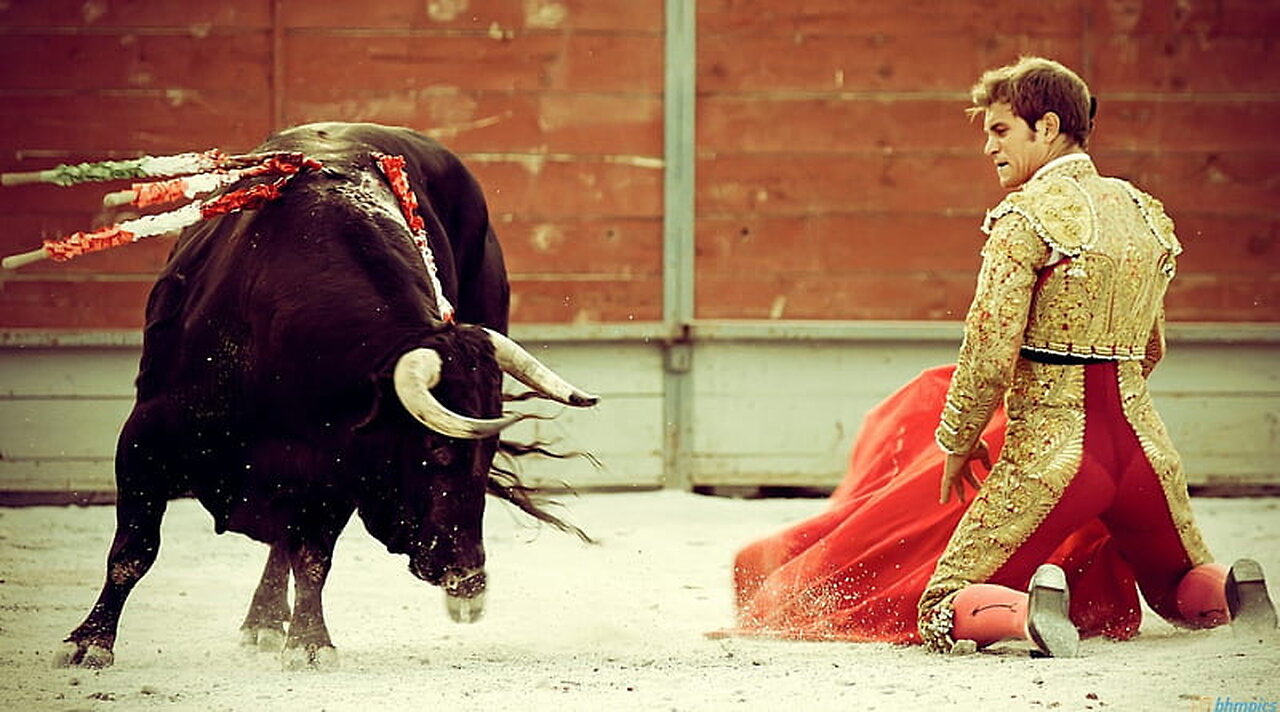Premium Only Content

Bullfighting Spanish Culture #24
Bullfighting, known as "corrida de toros" or "fiesta brava," is a traditional spectacle that has deep historical and cultural roots in Spain. The event takes place in specially designed arenas called "plazas de toros" and is a central element of Spanish culture, attracting both locals and tourists alike. While bullfighting is an iconic and controversial aspect of Spain, it is essential to understand that opinions on the practice vary widely within the country and around the world.
The bullfighting event typically consists of several stages, each with its own unique significance:
The Entry (Paseíllo): The bullfighters, known as "toreros," enter the arena in a procession, accompanied by their team, which includes "picadores" (mounted lancers) and "banderilleros" (bullfighters who place barbed sticks called banderillas in the bull's shoulders).
Tercios: The bullfight is divided into three parts called "tercios." In the first tercio, the bull is tested for aggression and bravery by the "picadores." They attempt to weaken the bull by stabbing it with a lance while on horseback, targeting its neck muscles.
The Second Tercio: In the second tercio, the "banderilleros" come into play. They taunt the bull with brightly colored banderillas, which are sharp sticks adorned with paper. The goal is to place these banderillas in the bull's shoulders to further weaken it and provoke it to make more aggressive movements.
The Final Tercio: This is the most critical and dangerous part of the bullfight. The "matador," the lead bullfighter, enters the ring armed with a cape and a small, sword-like weapon called the "estoque." The matador's objective is to perform a series of passes with the cape, displaying his artistry and skill in controlling the bull's movements. Afterward, he attempts to deliver a fatal thrust to the bull's heart using the estoque, aiming for a quick and humane death.
The Death of the Bull (La Muerte): If the matador's thrust is successful, the bull will die almost instantly. The bull is then dragged out of the arena by horses.
Throughout the bullfight, the audience reacts with cheers and applause, expressing their appreciation for the bullfighters' bravery and artistry. Depending on the performance, the matador might be awarded with the bull's ears or tail as a sign of exceptional skill.
Despite its cultural significance, bullfighting has become a contentious issue, drawing criticism from animal rights activists who consider it cruel and inhumane. Several regions in Spain have taken steps to ban or limit bullfighting, while others continue to uphold the tradition.
In summary, bullfighting events in Spain are visually striking spectacles that intertwine cultural heritage, artistry, and controversy. They provide a window into Spain's historical past and provoke ongoing debates about animal welfare and cultural preservation.
-
 LIVE
LIVE
Biscotti-B23
3 hours ago $1.31 earned🔴 LIVE EARLY ACCESS RANKED GRIND ⚽ THE BEST FOOTBALL GAME OUT 💥 REMATCH
120 watching -
 16:18
16:18
Mrgunsngear
12 hours ago $21.88 earnedBlack Aces Tactical S4 Tactical - Benelli M4 Clone But Does It Work?
102K5 -
 32:55
32:55
The Connect: With Johnny Mitchell
1 day ago $4.07 earnedInside America's LARGEST Pot Trafficking Gang: How Florida Fishermen Became #1 Most Wanted Cartel
44K9 -
 2:05:15
2:05:15
Right Side Broadcasting Network
13 hours agoLIVE REPLAY: President Trump Attends UFC Fight 314 - 4/12/25
117K14 -
 2:07:42
2:07:42
BlackDiamondGunsandGear
12 hours agoWho’s in Town for This Stream?
64.6K5 -
 1:24:56
1:24:56
Quite Frankly
21 hours ago"Wild Tales: Crazy Story Hotline" | The Brothers Ep. 1
91.9K15 -
 12:37
12:37
Tundra Tactical
18 hours ago $6.30 earned🚫🚫 Biden Era GUN CONTROL Gone!!!! 🚫🚫
71.2K20 -
 1:00:09
1:00:09
Motherland Casino
10 hours ago $6.82 earnedCynthia X Mia
63K7 -
 5:32:47
5:32:47
BubbaSZN
17 hours ago🔴 LIVE - BUBBA PLAYS WARZONE SEASON 3
44.1K2 -
 2:29:26
2:29:26
Mally_Mouse
17 hours agoSaturday Shenanigans!! - Let's Play: REPO
60.4K14